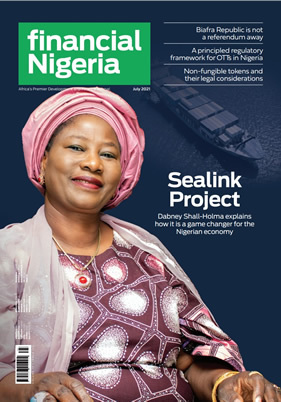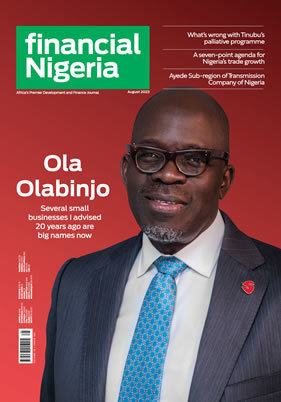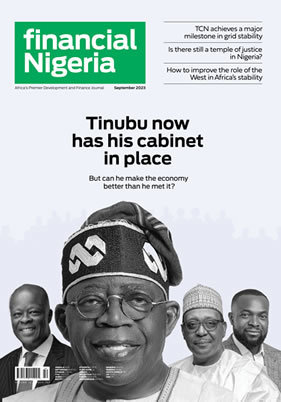Is a market-creating innovation an empowering innovation?

Feature Highlight
What Christensen described as an empowering innovation almost 12 years ago is what we call a market-creating innovation (MCI) today for the sake of specificity.
“What’s in a name? That which we call a rose, by any other name would smell as sweet”. – William Shakespeare, Romeo and Juliet.
Shakespeare said it best, or asked it best, what is in a name? When Juliet says this of Romeo to convey that his Montague name means nothing to her because it is him she loves, not his name, the audience is meant to take away the irrelevance of names. But I disagree.
Names are what help people understand concepts. Names convey different ideas and evoke different responses, and whether we like it or not, don’t only describe but also categorise. That’s why in 2021 Efosa wrote about switching out the term emerging economy for growth economy, and that’s why today I want to float back an original Clayton Christensen term for “market-creating innovations”: empowering innovations.
What’s an empowering innovation?
In a New York Times article from November 2012, Christensen defined empowering innovations as innovations that “transform complicated and costly products available to a few into simpler, cheaper products available to the many,” thereby empowering these new customers and generating economic growth. He goes on to list Ford’s Model T, Sony’s transistor radio, and IBM’s personal computers as examples of empowering innovations. To top it all off, he claimed that a key characteristic of empowering innovations was their ability to create jobs.
Sound familiar?
What Christensen described as an empowering innovation almost 12 years ago is what we call a market-creating innovation (MCI) today for the sake of specificity.
Lately, however, as we work with different foundations across the world, there have been many questions about what is classified as an MCI. Some people ask because the programmes they participate in exclusively fund MCIs. And others ask because they’re trying to understand the concept. Whatever the reason, every time I answer this question, it forces me to slow down, take a step back, and rethink the term and the theory behind it.
Empowering vs. market-creating
An innovation classifies as a market-creating innovation if it transforms complex and expensive products and services into simple and more affordable products, making them accessible to a whole new segment of people in a society, whom we call nonconsumers. A successful MCI will have three distinct outcomes: job creation, profit creation, and culture change. An innovation with these characteristics classifies as a market-creating innovation.
Now, let’s delve into the theory behind the term. A market-creating innovation will create growth for the economy and society because, to serve nonconsumers, i.e., many new customers, it’ll be necessary to create jobs to make, market, distribute, and sell the new innovation. In growth economies, where there’s often no infrastructure in place to make, market, distribute, and sell the innovation, the money generated from the innovation is often reinvested in developing these infrastructures, which, in turn, benefits society in a multitude and magnitude of ways.
In the late 1990s, for example, Mo Ibrahim decided he wanted to target Africa’s nonconsumption of telecommunications, so he created a business model that made mobile phones affordable and simple to the average African. To deliver this innovation, he had to provide his own power, build the roads necessary for transport, and train his employees (amongst many other activities). By investing in this innovation and the infrastructure necessary to deliver it, Mo Ibrahim revolutionised the telecommunications industry across Africa and unlocked value in many other markets.
Within six years he built operations in 13 countries and eventually sold his company for $3.4 billion dollars, but the power of that MCI didn’t stop there. In 2010, Celtel was bought and rebranded as Airtel. Today, Airtel Africa continues to benefit individuals, the community, and even the continent by reinvesting millions in training and development ($1.1 million), children’s education ($57 million), and women empowerment and mentorship programmes. The company revenues of over $5 billion annually, reaches 140 million customers, contributes almost $400 million in taxes, and is a significant driver of the continent’s telecommunications market, which employs over 3.6 million people and contributes $170 billion annually to the continent’s GDP.
That is what a market-creating innovation does: it creates a market. In the late 1990s, mobile phone penetration in Sub-Saharan Africa was less than 5%. Today, it’s around 43%. Of course, Celtel isn’t solely responsible, but they were a catalyst.
We can get technical about it and ask: well, was this market created, or was it simply activated by Celtel? A very intelligent colleague asked me that question, and I’m still unsure of my response…because as I revisit this MCI and think about why it’s an MCI, I have to admit that I’d also call Celtel an empowering innovation – an innovation that continues to empower individuals, communities, and an entire continent.
So…what’s in a name?
Romeo says, “Call me but love, and I’ll be new baptised.” What do you think? Is it time for market-creating innovations to take a new (old) name? Let us know.
Sandy Sanchez is a research associate at the Clayton Christensen Institute for Disruptive Innovation, where she focuses on understanding and solving global development issues through the lens of Jobs to Be Done and innovation theories. Her current work addresses how individuals can use market-creating innovations to create sustainable prosperity in growth economies.
Other Features
-
Can you earn consistently on Pocket Option? Myths vs. Facts breakdown
We decided to dispel some myths, and look squarely at the facts, based on trading principles and realistic ...
-
How much is a $100 Steam Gift Card in naira today?
2026 Complete Guide to Steam Card Rates, Best Platforms, and How to Sell Safely in Nigeria.
-
Trade-barrier analytics and their impact on Nigeria’s supply ...
Nigeria’s consumer economy is structurally exposed to global supply chain shocks due to deep import dependence ...
-
A short note on assessing market-creating opportunities
We have researched and determined a practical set of factors that funders can analyse when assessing market-creating ...
-
Rethinking inequality: What if it’s a feature, not a bug?
When the higher levels of a hierarchy enable the flourishing of the lower levels, prosperity expands from the roots ...
-
Are we in a financial bubble?
There are at least four ways to determine when a bubble is building in financial markets.
-
Powering financial inclusion across Africa with real-time digital ...
Nigeria is a leader in real-time digital payments, not only in Africa but globally also.
-
Analysis of NERC draft Net Billing Regulations 2025
The draft regulation represents a significant step towards integrating renewable energy at the distribution level of ...
-
The need for safeguards in using chatbots in education and healthcare
Without deliberate efforts the generative AI race could destabilise the very sectors it seeks to transform.
Most Popular News
- NDIC pledges support towards financial system stability
- Artificial intelligence can help to reduce youth unemployment in Africa – ...
- AfDB and Nedbank Group sign funding partnership for housing and trade
- Afreximbank backs Elumelu’s Heirs Energies with $750-million facility
- Africa needs €240 billion in factoring volumes for SME-led transformation
- ChatGPT is now the most-downloaded app – report












